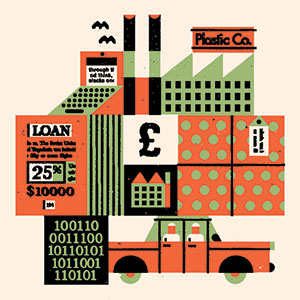The gross distortions of GDP

Roula Khalaf, Editor of the FT, selects her favourite stories in this weekly newsletter.
Call it the Christmas paradox. Our seasonal festival is the occasion both for a colossal consumerist blowout and for reflecting on the importance of things money can’t buy: family bonds, friendship, anticipation and nostalgia.
So as the mince pies bake and the sherry flows, whither GDP? GDP – or gross domestic product – measures the size of the economy by adding up all income earned, or all money spent, or the monetary value of everything produced: the three should be equivalent. But they are not, notoriously, equivalent to some deeper measure of what all this stuff is really worth to us.
As the economist Diane Coyle points out in her forthcoming book GDP: A Brief But Affectionate History, the idea that GDP would measure wellbeing was sidelined in the 1930s. Simon Kuznets produced the first serious estimates of US GDP in 1934, and wanted to adjust his calculations to reflect “the elements which, from the standpoint of a more enlightened social philosophy than that of an acquisitive society represent disservice rather than service”. It was a political battle that Kuznets lost: America was focused on ramping up production to escape the Depression and prepare for war.
Why not, then, replace GDP with a measure of what really matters: happiness? This suggestion just won’t go away, despite the fact that happiness is already widely measured. And while the measures of it look useful and are inexpensive to collect, they’re surely too crude for macroeconomic purposes. Imagine calculating national income the same way we do happiness, by asking everyone, “How much money do you make, on a scale of one to seven?” and then averaging the result. I’m not sure we’d learn a great deal.
Yet GDP is problematic, and increasingly so. We seem to have no convincing measure, for example, of what contribution financial services make to the economy. In the wake of the recession, Andrew Haldane of the Bank of England pointed out that according to the UK’s national accounts, this contribution grew at the fastest rate on record in the fourth quarter of 2008 – the quarter that began a fortnight after Lehman Brothers collapsed.
Or consider what appears to be an opposite error. According to the economist Erik Brynjolfsson of MIT, the information sector of the economy (software, telecoms, publishing, data processing, movies, TV) has scarcely grown over the past 25 years as measured by GDP. This seems bizarre but it’s easy to see the logic: GDP measures the price paid for goods and services, but many valuable digital services are free or cheap. Brynjolfsson and co-author JooHee Oh reckon that every year consumers in the US are enjoying an extra $100bn of services online they don’t have to pay for.
There are plenty of other knotty problems too – from how to measure the losses caused by distracting Facebook posts to how to calculate the gains from antibiotics and super-efficient lighting.
Coyle argues that GDP collection needs to be reformed but not replaced. I agree. But where does that leave Christmas? Are we doomed to live in an increasingly commercial society that’s distorted by a concept which leaves out so much of what really matters?
Perhaps crass commercialism is our fate. But let’s not blame GDP (or its close cousin GNP, gross national product) for that. In 1968, Bobby Kennedy famously declared that GNP “counts napalm and …nuclear warheads and armoured cars for the police to fight the riots in our cities. Yet [it] does not allow for the health of our children … the beauty of our poetry or the strength of our marriages”.
Indeed, it does not. But divorces don’t begin at the Office for National Statistics; nor did the Bureau of Labor Statistics start the Vietnam war. GDP has its flaws – but if you give, or receive, a costly, unwanted gift this Christmas, please don’t blame the statisticians.
‘The Undercover Economist Strikes Back’, by Tim Harford, is published by Little, Brown
Comments